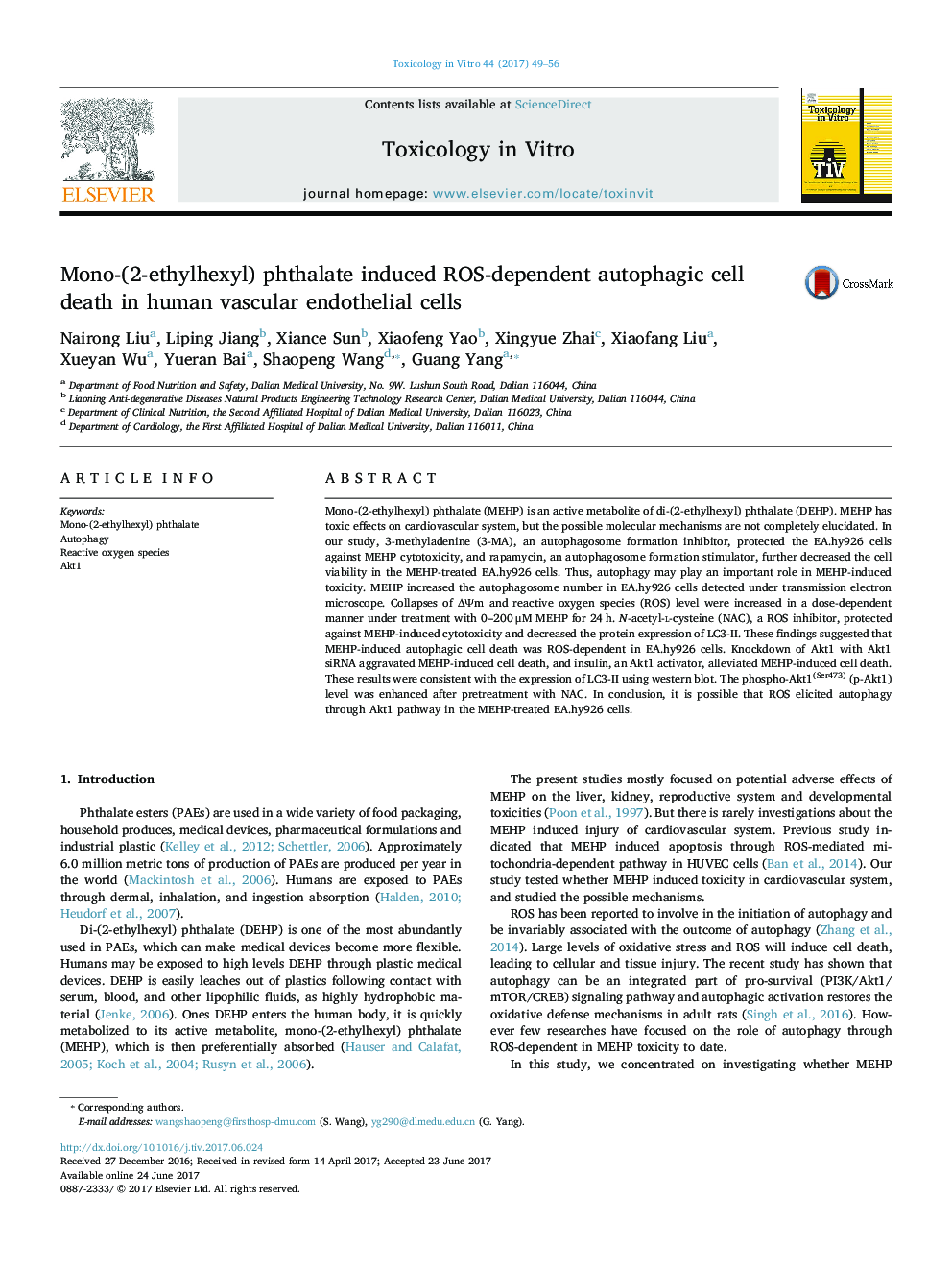| Article ID | Journal | Published Year | Pages | File Type |
|---|---|---|---|---|
| 5562515 | Toxicology in Vitro | 2017 | 8 Pages |
Abstract
Mono-(2-ethylhexyl) phthalate (MEHP) is an active metabolite of di-(2-ethylhexyl) phthalate (DEHP). MEHP has toxic effects on cardiovascular system, but the possible molecular mechanisms are not completely elucidated. In our study, 3-methyladenine (3-MA), an autophagosome formation inhibitor, protected the EA.hy926 cells against MEHP cytotoxicity, and rapamycin, an autophagosome formation stimulator, further decreased the cell viability in the MEHP-treated EA.hy926 cells. Thus, autophagy may play an important role in MEHP-induced toxicity. MEHP increased the autophagosome number in EA.hy926 cells detected under transmission electron microscope. Collapses of ÎΨm and reactive oxygen species (ROS) level were increased in a dose-dependent manner under treatment with 0-200 μM MEHP for 24 h. N-acetyl-l-cysteine (NAC), a ROS inhibitor, protected against MEHP-induced cytotoxicity and decreased the protein expression of LC3-II. These findings suggested that MEHP-induced autophagic cell death was ROS-dependent in EA.hy926 cells. Knockdown of Akt1 with Akt1 siRNA aggravated MEHP-induced cell death, and insulin, an Akt1 activator, alleviated MEHP-induced cell death. These results were consistent with the expression of LC3-II using western blot. The phospho-Akt1(Ser473) (p-Akt1) level was enhanced after pretreatment with NAC. In conclusion, it is possible that ROS elicited autophagy through Akt1 pathway in the MEHP-treated EA.hy926 cells.
Related Topics
Life Sciences
Environmental Science
Health, Toxicology and Mutagenesis
Authors
Nairong Liu, Liping Jiang, Xiance Sun, Xiaofeng Yao, Xingyue Zhai, Xiaofang Liu, Xueyan Wu, Yueran Bai, Shaopeng Wang, Guang Yang,
